Km 4710-5750. Coast of Santa Cruz. (Part 1/2)
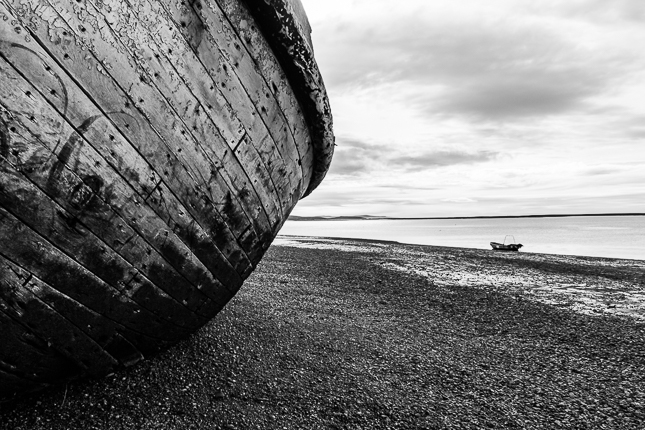 These waters see how an unknown hand is robbing the quill to write a new story. It's taking place a titanic and terrible encounter between two worlds: the one that dwells the land, and the one that tries to spread throughout the land. It's a game of elements handled by unequal forces. Nothing will be like before. The new History is now written and it's imposed.
These waters see how an unknown hand is robbing the quill to write a new story. It's taking place a titanic and terrible encounter between two worlds: the one that dwells the land, and the one that tries to spread throughout the land. It's a game of elements handled by unequal forces. Nothing will be like before. The new History is now written and it's imposed.
San Julián Bay. Puerto San Julián, Santa Cruz. 2017 © Leo Micieli
Km 4710-5340. Puerto Deseado - Puerto San Julián. Septiembre 10th, 2017.
In historical terms, the coast of Santa Cruz is key. It's here where Ferdinand Magellan arrived, in San Julián Bay, in his attempt to find a western passage to the Indies. Here's where World's History twist its direction, forced by conquests, expeditions and massacres, something that afterwards would be extended to the rest of the territory. In this place is coined the term 'Patagonia', the name that was given to the land of 'patagones', who actually called themselves 'aonikenk'. Things are not easy after March of 1520. The Earth now has discovered its axis, and spins 180 degrees.
Echoes of those times go around the Globe and the centuries, and are still heard. The flames of the ancient and recent events still shake this land, and the aftershocks are felt. There are big geographic, cultural and social contrasts. A diversity of origins, customs, ways of life are mixed up and spreaded in such a large area. There's a poetic simpleness in the shores, and there's spilled blood also. Flora, fauna and ecosystems try to survive with their own natural variables, plus the current ones: humans, bureaucratics, economical. The ancient character of all this region is in danger; the threat ramifies in all directions.
Yet, something tries to go against the current, to fix the damage, to preserve what is still on its feet. Nobody notice it, it doesn't seem very important, it's not a priority. But it exists. This land is still the 'Land of Giants'.
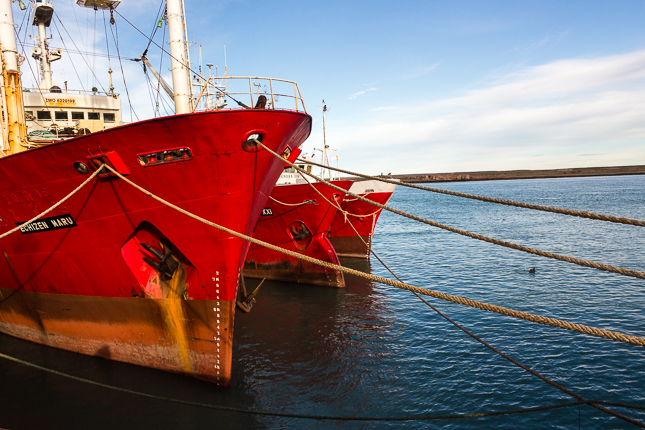 Puerto Deseado. Santa Cruz. 2017 © Leo Micieli
Puerto Deseado. Santa Cruz. 2017 © Leo Micieli
After crossing many kilometers of the typical patagonian road, almost straight and with steppe at both sides, I arrive to Puerto Deseado. A sign at the top of a hill announces it and down a sinuous road begin to apperar the estuary, the dry dock, the port and the city. The distance is no too long but anyway a relief is felt when I arrive, as if I satiated my thirst.
The airs of the port shape other landscape, other customs, other rhythm, an intense and at the same time quiet dynamic, the type of quietness of that one that perfectly knows a craft and simply displays it.
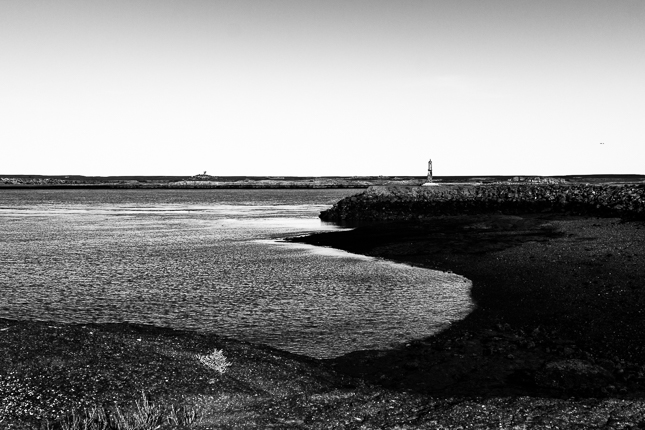 Puerto Deseado. Santa Cruz. 2017 © Leo Micieli
Puerto Deseado. Santa Cruz. 2017 © Leo Micieli
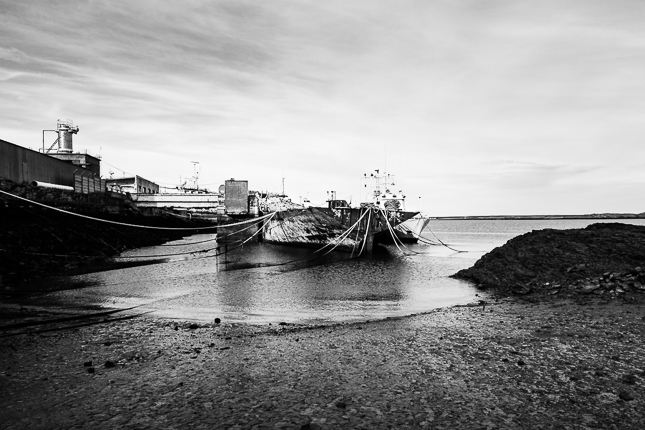 Puerto Deseado. Santa Cruz. 2017 © Leo Micieli
Puerto Deseado. Santa Cruz. 2017 © Leo Micieli
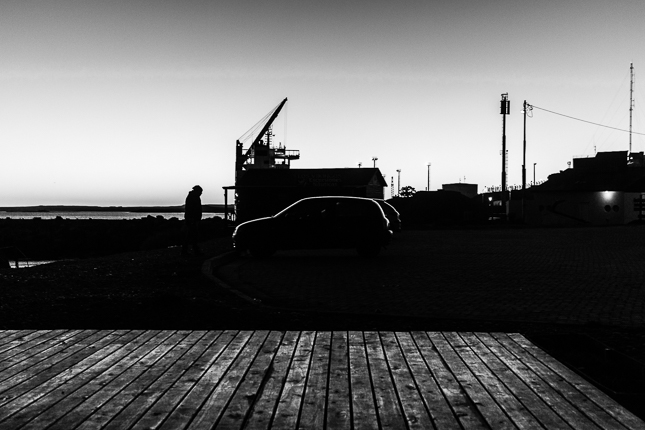 Puerto Deseado. Santa Cruz. 2017 © Leo Micieli
Puerto Deseado. Santa Cruz. 2017 © Leo Micieli
The name of Puerto Deseado comes from a privateer, Thomas Cavendish, who arrives to these coasts and baptize them with the name of his flagship, Desire; Port Desire is the new denomination which in spanish means Puerto Deseado. It's curious and quite suggesting the term 'desire', even more if it comes from a pirate. The old navigators of these waters see how rich this land is and the possibilities it has, so they claim it for themselves. It's a prophetic term as well, as this area is claimed for the British Crown. This behavior towards this and other territories, become a frequent habit for the European kingdoms, even confronting them each other.
The deep water port is the main engine of the city. The port activity is big and very important.
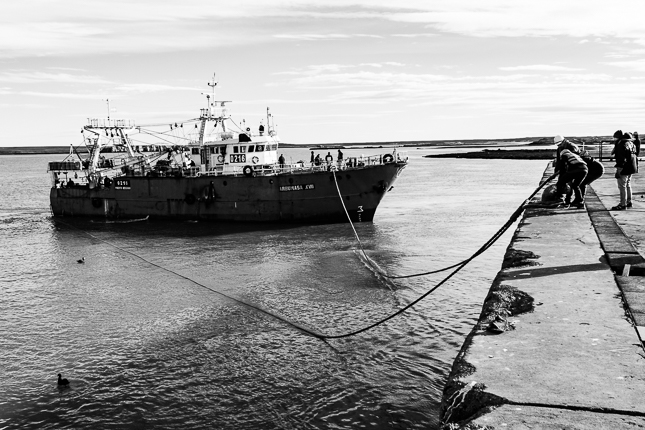 Puerto Deseado. Santa Cruz. 2017 © Leo Micieli
Puerto Deseado. Santa Cruz. 2017 © Leo Micieli
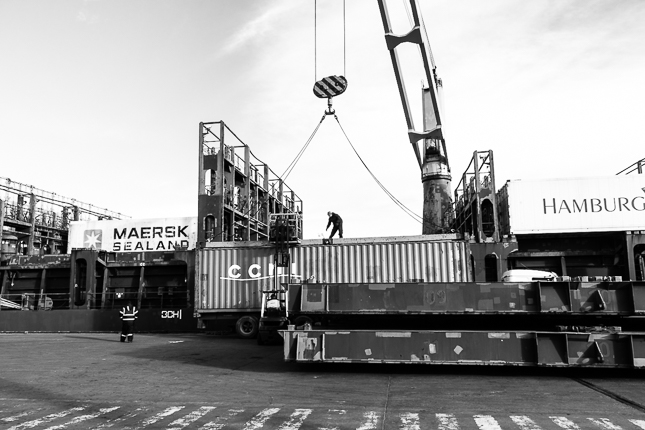 Puerto Deseado. Santa Cruz. 2017 © Leo Micieli
Puerto Deseado. Santa Cruz. 2017 © Leo Micieli
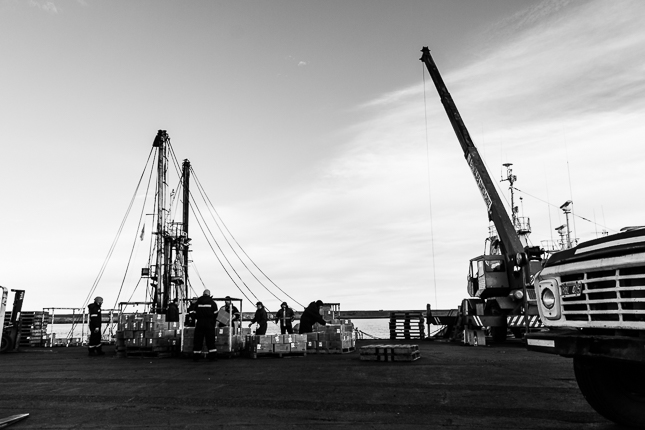 Puerto Deseado. Santa Cruz. 2017 © Leo Micieli
Puerto Deseado. Santa Cruz. 2017 © Leo Micieli
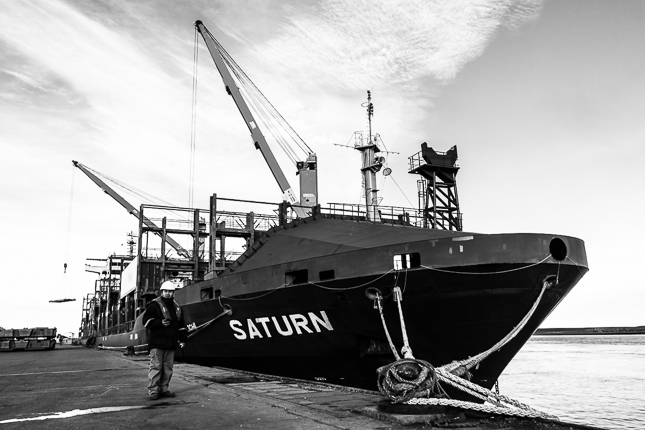 Puerto Deseado. Santa Cruz. 2017 © Leo Micieli
Puerto Deseado. Santa Cruz. 2017 © Leo Micieli
The city's activity is concentrated between the hills, the streets that go up and down and an organized downtown. There's willingness in the people that smile, are solidary and have a friendly attitude in any part. It seems that everyone tries to preserve the peace of the place keeping the usual quietness.
Arriving to Puerto Deseado implies to take a detour of the National Route 3, about 120 km at the Southeast, and to go back by the same road to get out of the city as there are no other choices. It's not very comfortable for travelers nor for any kind of transport to take this detour. It's evident that there's a lack of planification regarding to the importance that this city has. But on the other hand, perhaps this limitation places it at good distance from the crowds that rarefy the air of a site.
At short distance by car, even by walking, there are canyons, rock formations, caves, plateaus, flora and fauna, viewpoints, sea, steppe... A diversity and a huge geographic and ecological beauty, concentrated in just a few kilometers around.
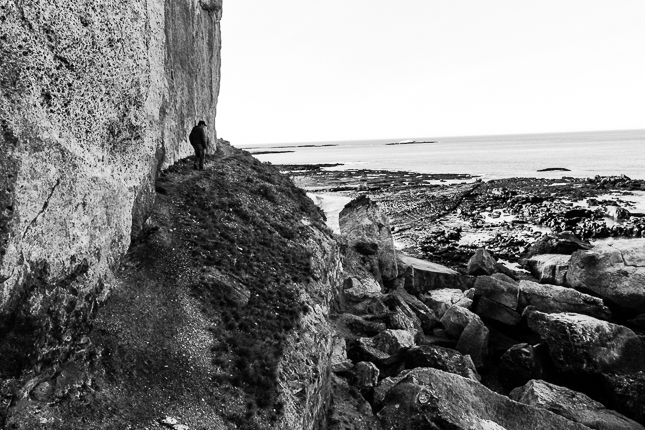 Puerto Deseado. Santa Cruz. 2017 © Leo Micieli
Puerto Deseado. Santa Cruz. 2017 © Leo Micieli
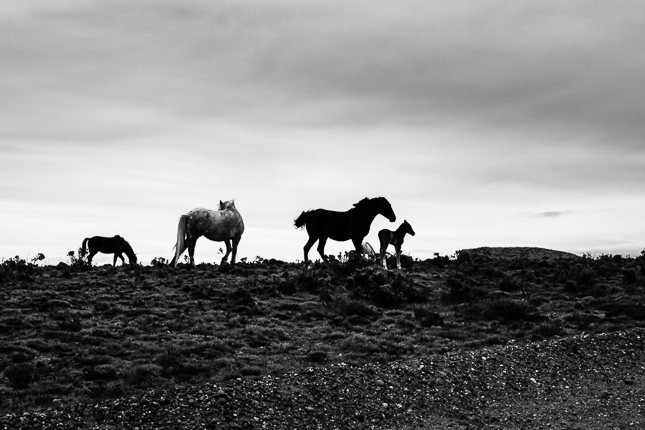 Puerto Deseado. Santa Cruz. 2017 © Leo Micieli
Puerto Deseado. Santa Cruz. 2017 © Leo Micieli
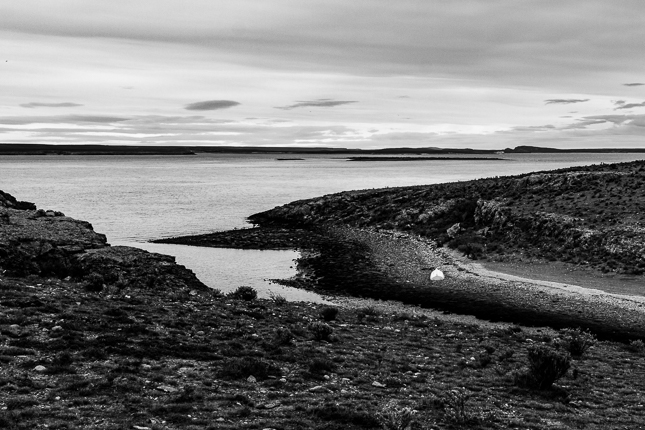 Puerto Deseado. Santa Cruz. 2017 © Leo Micieli
Puerto Deseado. Santa Cruz. 2017 © Leo Micieli
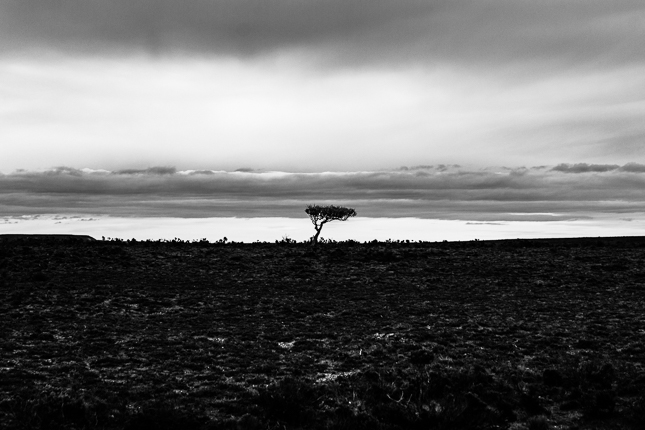 Crossed by tenacious winds,
Crossed by tenacious winds,
a molle arises above the canyon that borders the estuary.
Its roots are grasped to the soil, its trunk is twisted aside,
its spines point at the danger that threats.
It is not isolated, it is not out of all.
It is linked to the ancients
with stillness and wisdom though.
Puerto Deseado. Santa Cruz. 2017 © Leo Micieli
There's no place completely separated from others, in spite of diferent distances and ways of living. Yet, Puerto Deseado preserves something distinct in relation to other patagonian towns. There are innumerable places to visit, important port and fishing activity, a feeling of constant quietness. All these aspects, that may produce chaos if they're not harmonized, here is in fact the contrary, a combination of elements that are pleasant both for who live here and who are visiting. It is translated to the mood of the people in the sense of preserving what is well done and no leave nothing alter it. There are common elements to the rest of the territory: the wind, the cold, the rough beauty, the geological history, the diversity of origins, the lack or harm of some resources, the history marked by foreign domination, elements that sometimes are good and others not.
 Puerto Deseado. Santa Cruz. 2017 © Leo Micieli
Puerto Deseado. Santa Cruz. 2017 © Leo Micieli
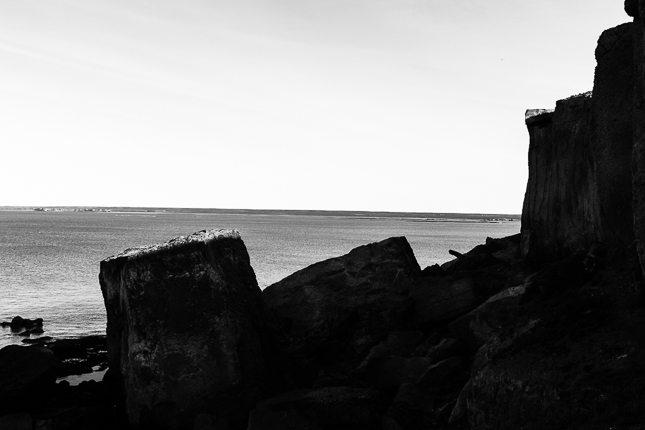 Puerto Deseado. Santa Cruz. 2017 © Leo Micieli
Puerto Deseado. Santa Cruz. 2017 © Leo Micieli
 Puerto Deseado. Santa Cruz. 2017 © Leo Micieli
Puerto Deseado. Santa Cruz. 2017 © Leo Micieli
 Puerto Deseado. Santa Cruz. 2017 © Leo Micieli
Puerto Deseado. Santa Cruz. 2017 © Leo Micieli
A brief stay in the town of Fitz Roy to come back to Route 3 and go straightly towards the South. It's less than twenty four hours total, but it's possible to appreciate a wonderful sunset, talk with the gentle personnel of the gas station and continue until my next destination.
 National Route 281. Santa Cruz. 2017 © Leo Micieli
National Route 281. Santa Cruz. 2017 © Leo Micieli
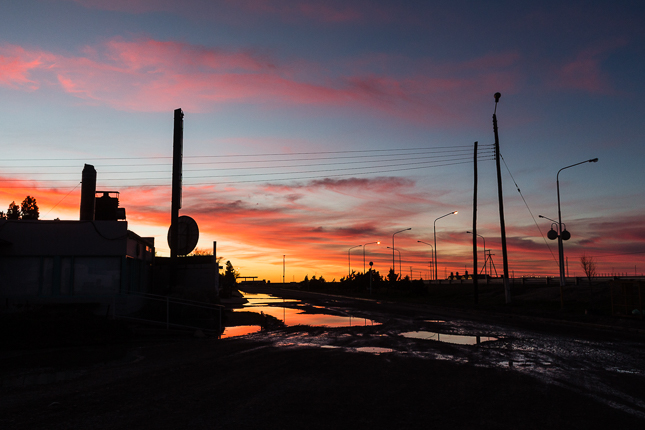 Fitz Roy. Santa Cruz. 2017 © Leo Micieli
Fitz Roy. Santa Cruz. 2017 © Leo Micieli
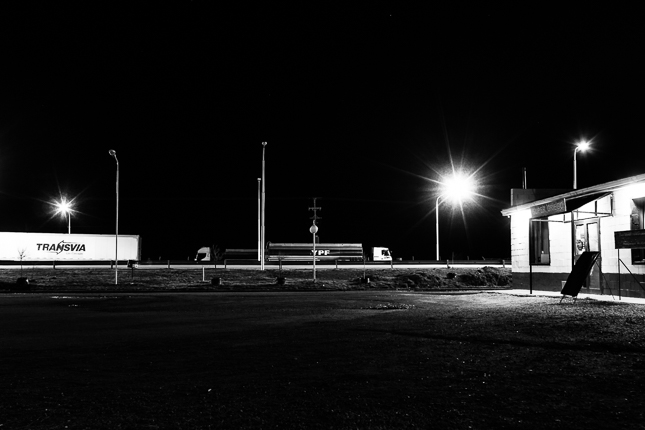 Fitz Roy. Santa Cruz. 2017 © Leo Micieli
Fitz Roy. Santa Cruz. 2017 © Leo Micieli
Puerto San Julián is a placid place surrounded by plateaus and steppe, with mild hills that border the town, a coast and a bay in where people go fishing, take a walk, ride a boat, in where there's no sings of any danger at all. The outskirts are also wonderful with viewpoints from where to watch the landscape. Over the hills there are paths of trekking, bicycles, quads, a low and uniform vegetation as a carpet. The dirt road itself is beautiful enough wheter walking or by car. On the streets people wave their hands. Life happens in complete calm.
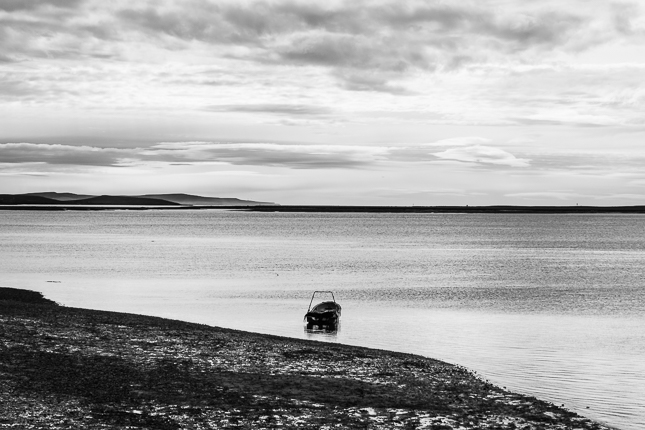 Puerto San Julián. Santa Cruz. 2017 © Leo Micieli
Puerto San Julián. Santa Cruz. 2017 © Leo Micieli
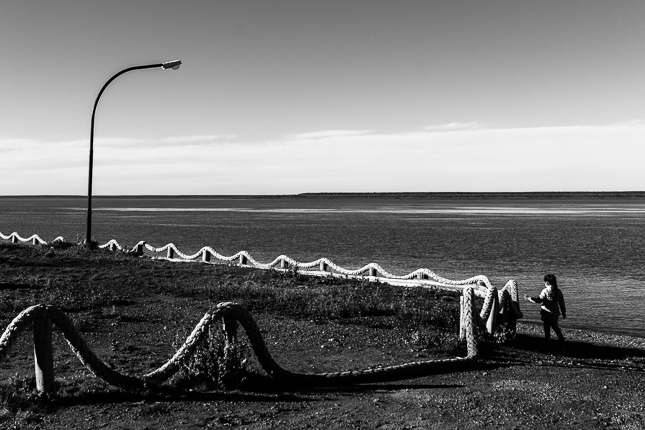 Puerto San Julián. Santa Cruz. 2017 © Leo Micieli
Puerto San Julián. Santa Cruz. 2017 © Leo Micieli
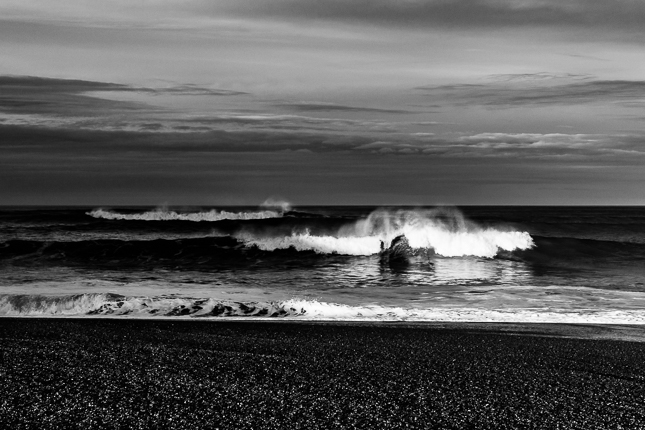 Puerto San Julián. Santa Cruz. 2017 © Leo Micieli
Puerto San Julián. Santa Cruz. 2017 © Leo Micieli
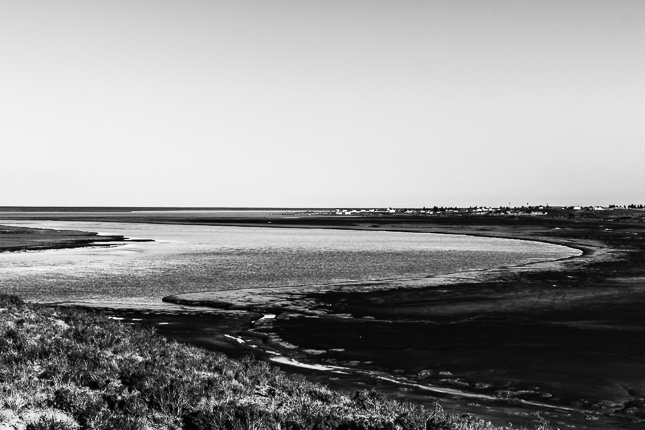 Puerto San Julián. Santa Cruz. 2017 © Leo Micieli
Puerto San Julián. Santa Cruz. 2017 © Leo Micieli
The quiet mood of Puerto San Julián crosses its atmosphere. The airs are different now. Nobody would suppose that five centuries ago there were transcendent and decisive facts for local History, and for the rest of Patagonia and even the World.
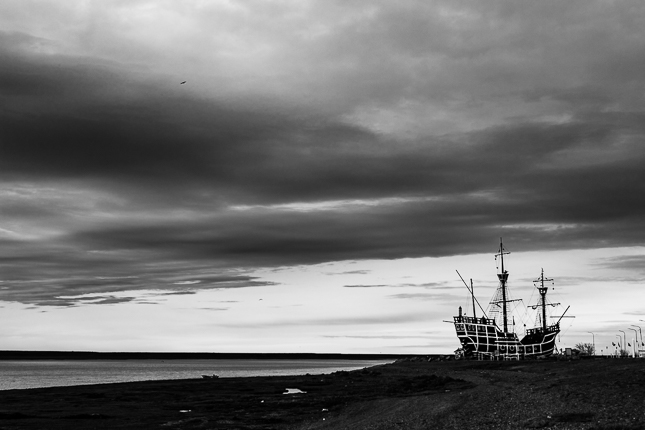 Réplica 1:1 from the Nao Victoria. Puerto San Julián, Santa Cruz. 2017 © Leo Micieli
Réplica 1:1 from the Nao Victoria. Puerto San Julián, Santa Cruz. 2017 © Leo Micieli
The Nao Victoria is the only ship of the Magellanic Fleet that was able to travel around the Globe, which was the first circumnavigation of the History. The Kingdom of Spain and Magellan himself, in order to reach that voyage, follow the conquests and search for an interoceanic pass to the Indies, docks on the coasts of San Julián Bay in where stays for some months until restock and pass the winter. Over the next months this waters are shaken and dyed with red. Uprisings, executions, evangelizations, prisoners, a deserter ship and another one sunk in the Santa Cruz River. And then the aonikenk, so called tehuelches by the mapuches indians, who see how their culture, their people and their land are massacred. The consequences are permanent and intensify over the years and the centuries. Afterward, the authorities of the country themselves continue this task.
The character of this region and the whole Patagonia is decided, and it's understood by these events and by what happen even until these days. In time it start to appear new faces and old behaviors. The recent History tells about a war, Malvinas War, with San Julián as a strategic point as the rest of Santa Cruz Coast as well.
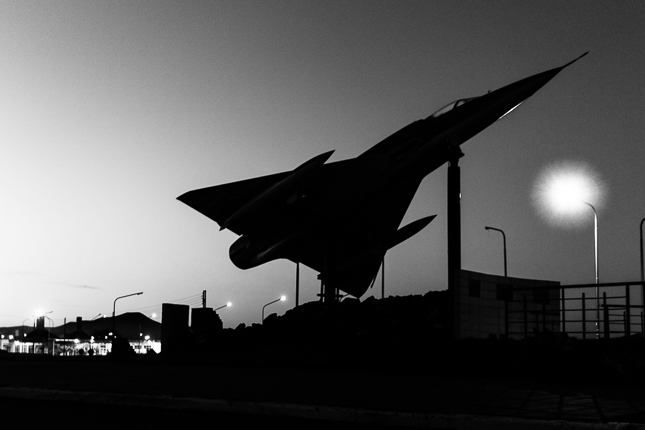 Mirage V Dagger from the Argentinian Air Force, as those used in Malvinas War. Puerto San Julián, Santa Cruz. 2017 © Leo Micieli
Mirage V Dagger from the Argentinian Air Force, as those used in Malvinas War. Puerto San Julián, Santa Cruz. 2017 © Leo Micieli
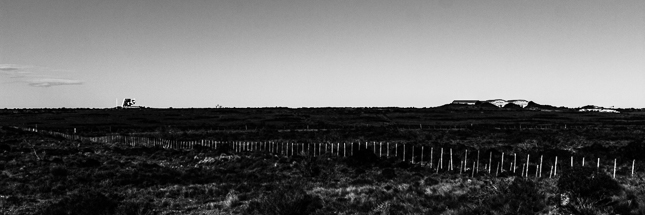 Airfield used during Malvinas War. Puerto San Julián, Santa Cruz. 2017 © Leo Micieli
Airfield used during Malvinas War. Puerto San Julián, Santa Cruz. 2017 © Leo Micieli
After eleven months of traveling through good part of Patagonia in inevitable to start to notice more clearly that it's not an easy region at all. Apart from the climate and geographic conditions, distances and general roughness of the territory, there are factors that make it even harder to inhabitate. Those who were born here and others who came from other parts to live know what is this about and what they have to face in the daily life.
Water supply problems, whether by waste, shortage or pollution, open dumps plus the strong winds, abandoned factories, political comings and goings, lack of plannification and unwillingness, natural resources scattered on the World without any control, precarious work subject to economy, health problems due to certain activities, hundreds and thousands of hectares in the hands of a few, ancient, old and modern culture set aside.
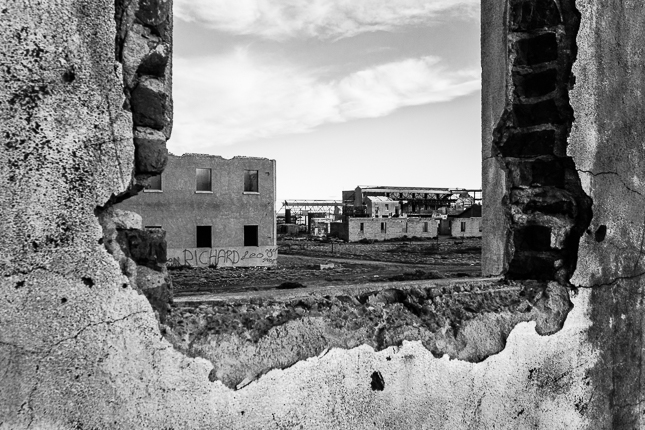 Former Swift Meat Processing Plant. Puerto San Julián, Santa Cruz. 2017 © Leo Micieli
Former Swift Meat Processing Plant. Puerto San Julián, Santa Cruz. 2017 © Leo Micieli
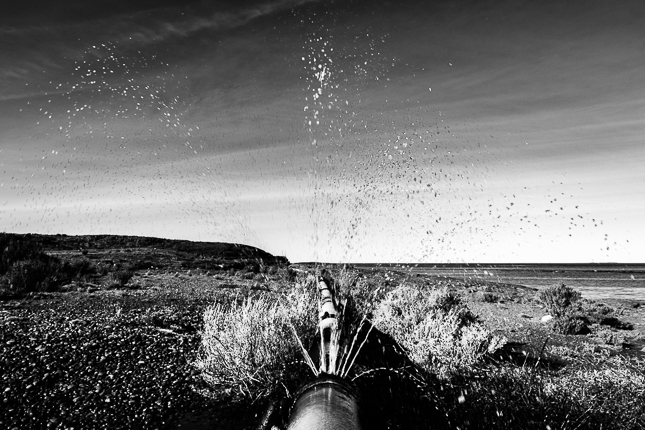 Puerto Deseado. Santa Cruz. 2017 © Leo Micieli
Puerto Deseado. Santa Cruz. 2017 © Leo Micieli
 Old Patagonian Train Station. Puerto Deseado, Santa Cruz. 2017 © Leo Micieli
Old Patagonian Train Station. Puerto Deseado, Santa Cruz. 2017 © Leo Micieli
 Puerto Deseado. Santa Cruz. 2017 © Leo Micieli
Puerto Deseado. Santa Cruz. 2017 © Leo Micieli
The ancient wisdom of this place has been interrupted, vealed, punished since long time, but not extinguished. Under the geographical mantle the forces that give rise to life in all its forms still exist.
Regio Gigantum, perhaps that's the best denomination for this place. The conquerors give that name to this land because of the proportion of its original inhabitants, but there's another hidden meaning. It describes who are able to live here, to comprehend this region, to respect it. Who had and still having a giant spirit to deserve to live here.
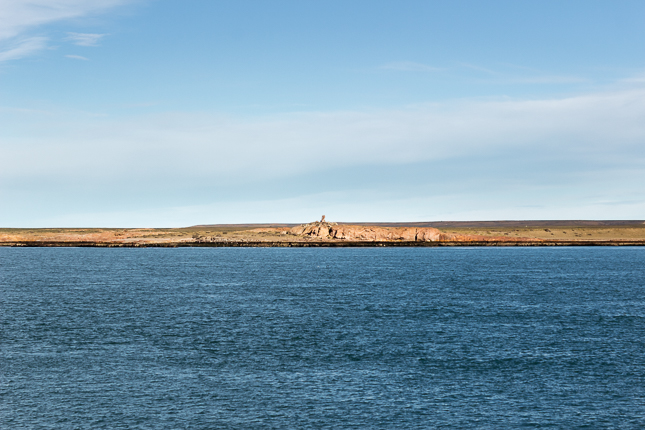 Natural Monument Piedra Toba. Puerto Deseado, Santa Cruz. 2017 © Leo Micieli
Natural Monument Piedra Toba. Puerto Deseado, Santa Cruz. 2017 © Leo Micieli
Julio (03/10/2017)
Leo, al leer tus relatos de las experiencias vividas ,da la sensación de estar recorriendo la PATAGONIA de repente en el lomo de un caballo o en un vehículo motorizado y también desde las alturas mirando con la vista aguda de un águila , acompañado por un guía enamorado de esos parajes y que ubica al lector perfectamente en cada escenario y además contando parte de la historia de cada sitio que muchos ignoramos .
Km 30-100 - First impressions in Patagonian Coast
Km 100-410 - The sea
Km 410-3650 - 'Stop, look, listen'. (Part 1/2)
Km 410-3650 - 'Stop, look, listen'. (Part 2/2)
Km 3650-4190. Puerto Madryn - Puerto Pirámides - Bird Island
Km 4190-4710. Trelew-Comodoro Rivadavia-Caleta Olivia
Km 4710-5750. Coast of Santa Cruz. (Part 1/2)
Km 4710-5750. Coast of Santa Cruz. (Part 2/2)
Km 5750-6960. Tierra del Fuego
Km 6960-8800. West of Santa Cruz.
Km 8800-9670. San Jorge Gulf Basin.
Leave a Reply